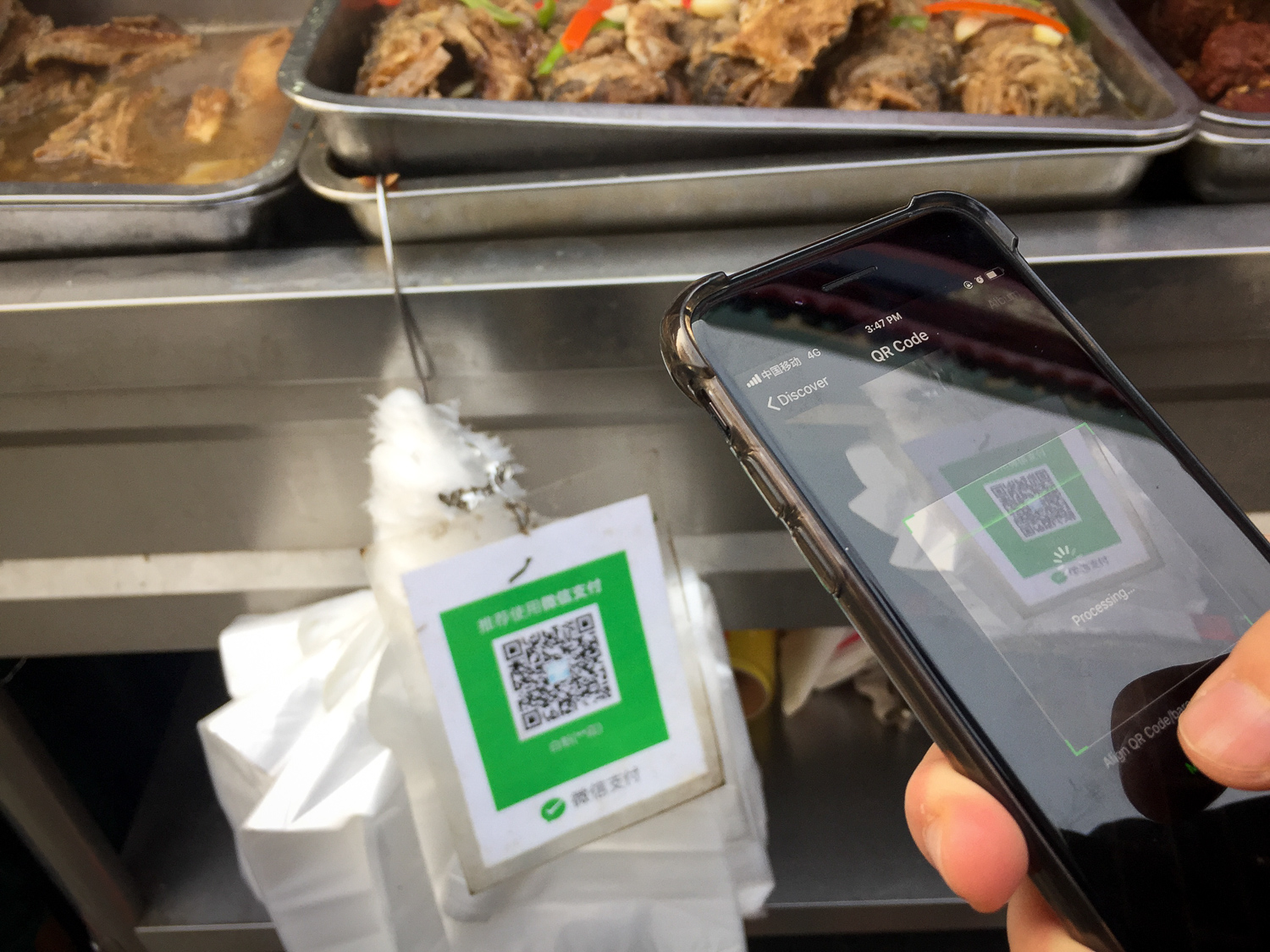This post comes courtesy of our content partners at TechNode.

It’s no secret that China remains a leading force in the mobile payments sector thanks to easy smartphone access. In 2016, the transaction volume of mobile payments in China has reached RMB 35.33 trillion (USD 5.61 trillion), and is projected to reach RMB 295.99 trillion (USD 47 trillion) in 2019, according to research firm Analysys (易观).
Simply by scanning QR codes, smartphone users can pay bills and purchase goods via mobile payment apps. Walking around the streets in China, you get a good sense as to how mobile payments and QR code technology have changed everyday life. Below are just a few examples of the myriad of places you may find a handy QR code to pay for goods.
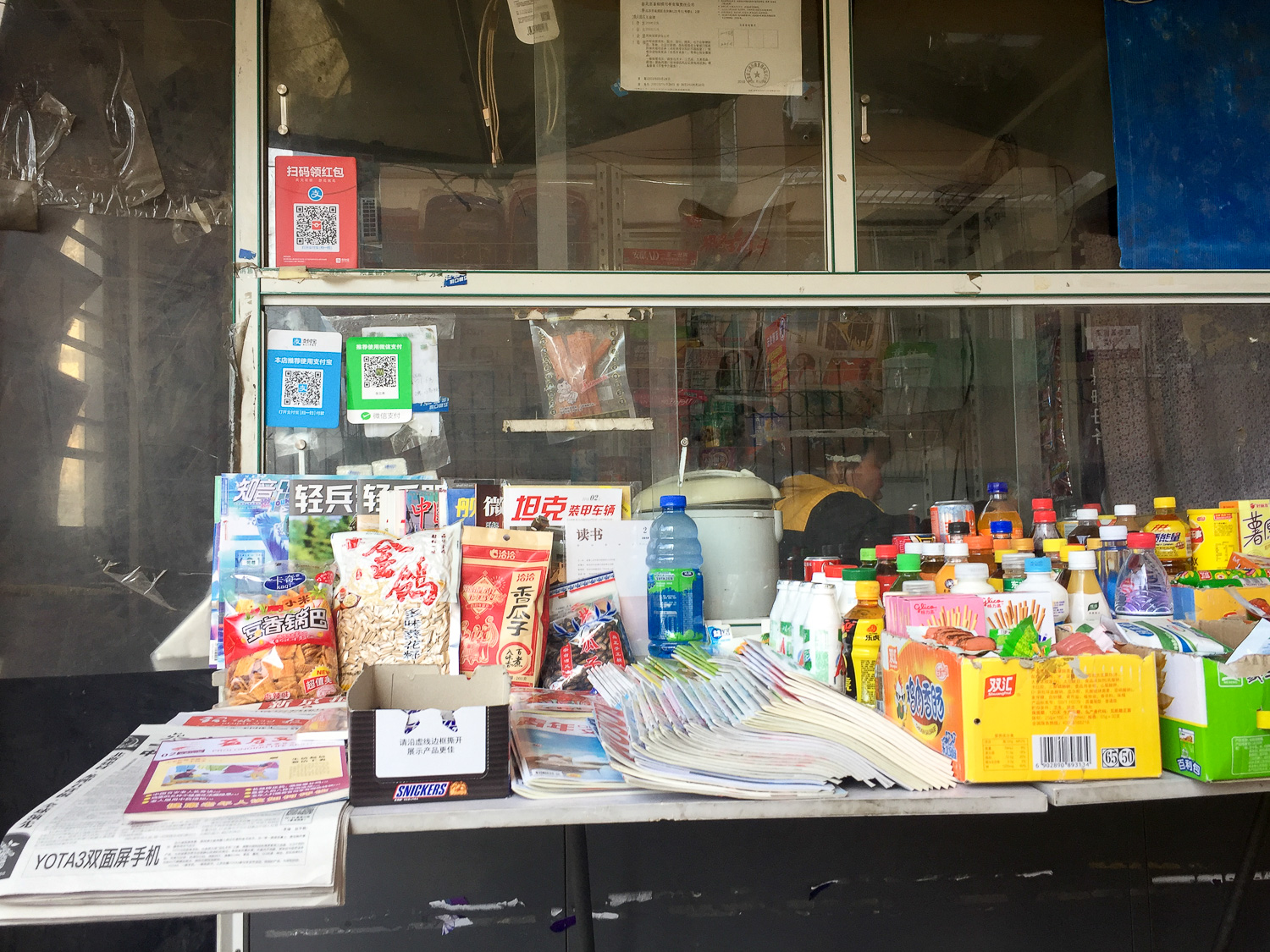
Customers can pay with Alipay or WeChat Pay at a newsstand in Beijing
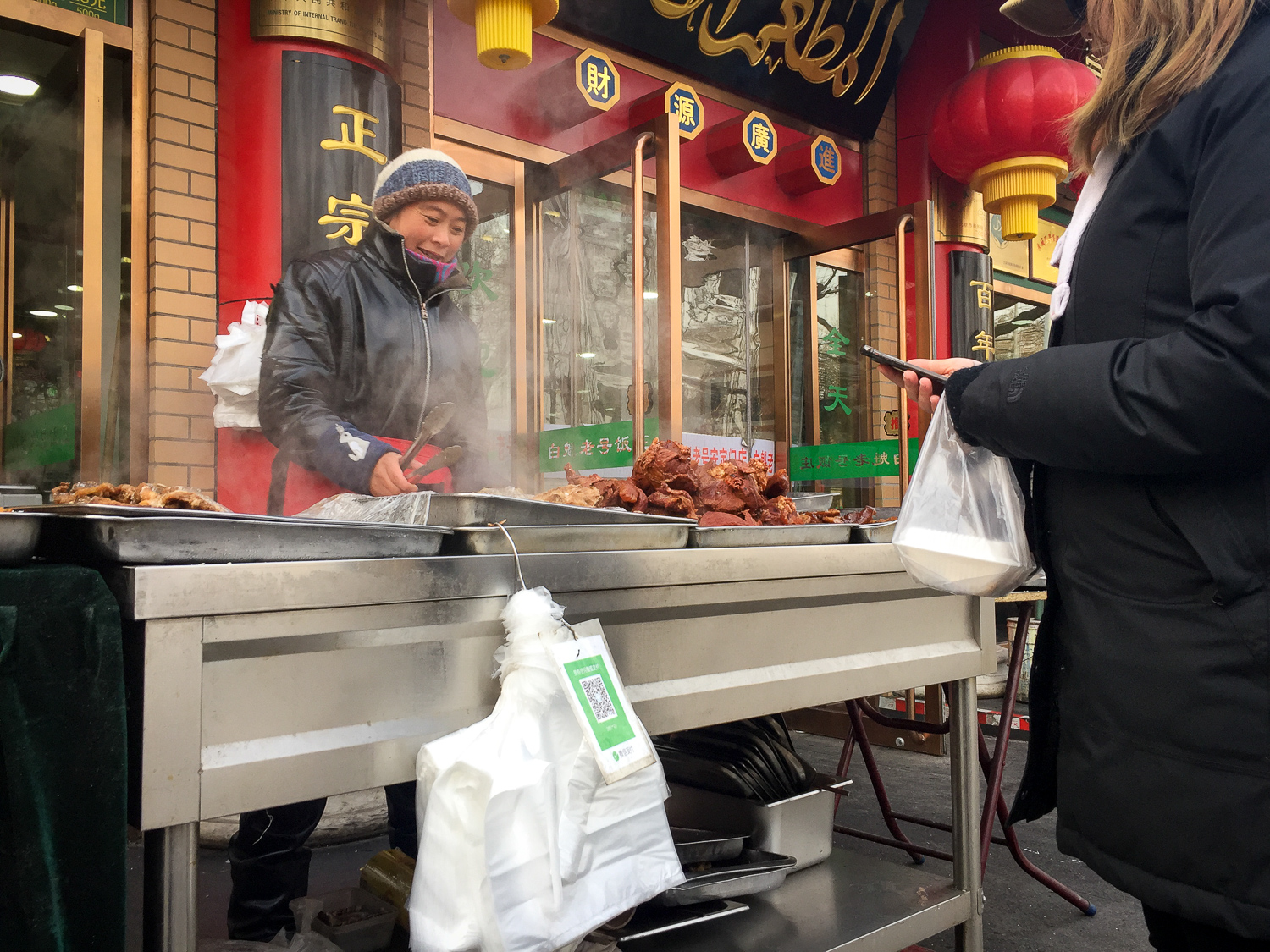
The payment goes directly to the vendor’s WeChat wallet

It takes only a few seconds to process a transaction
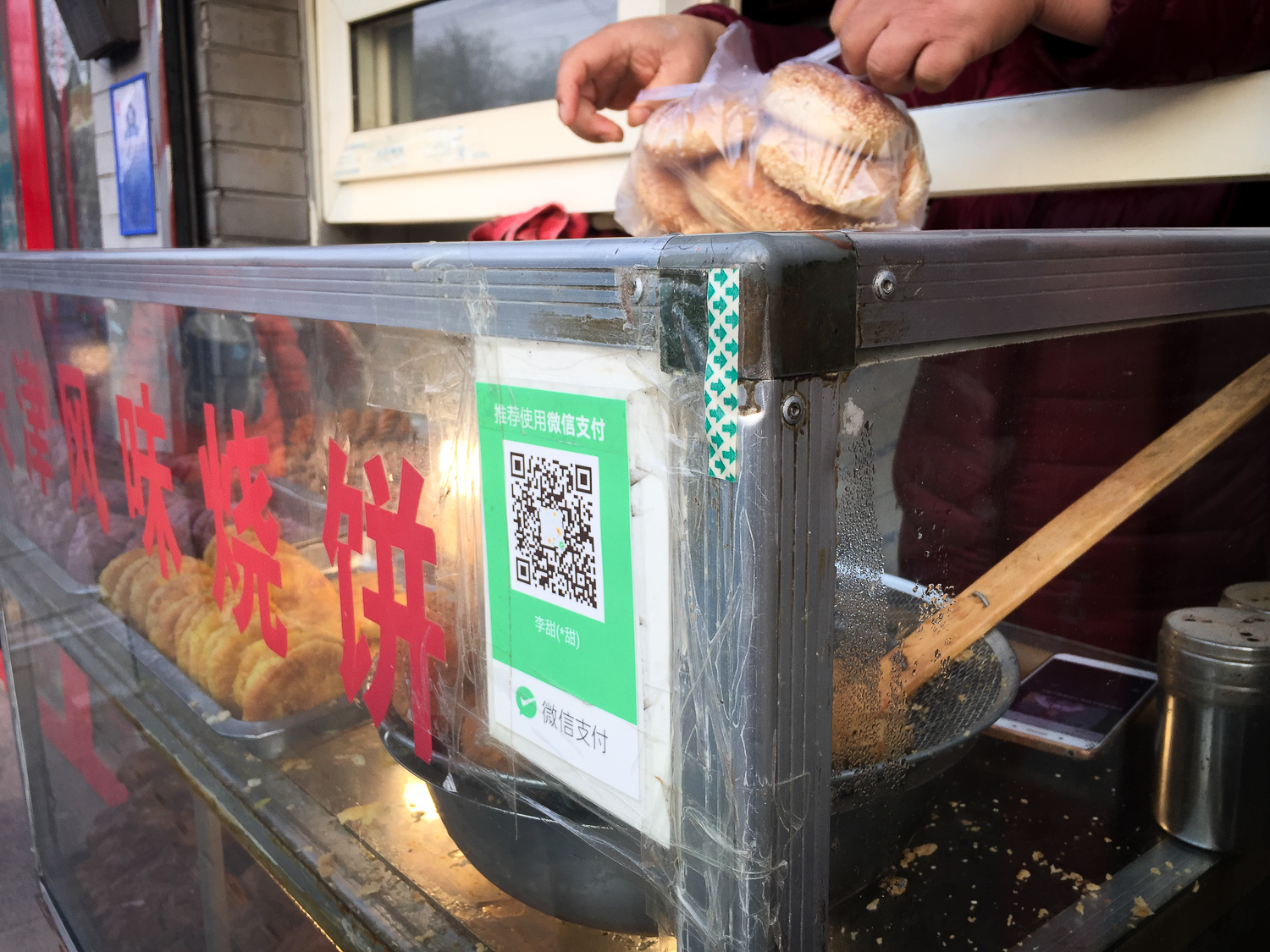
Nearly all the food vendors in major cities provide mobile payment options
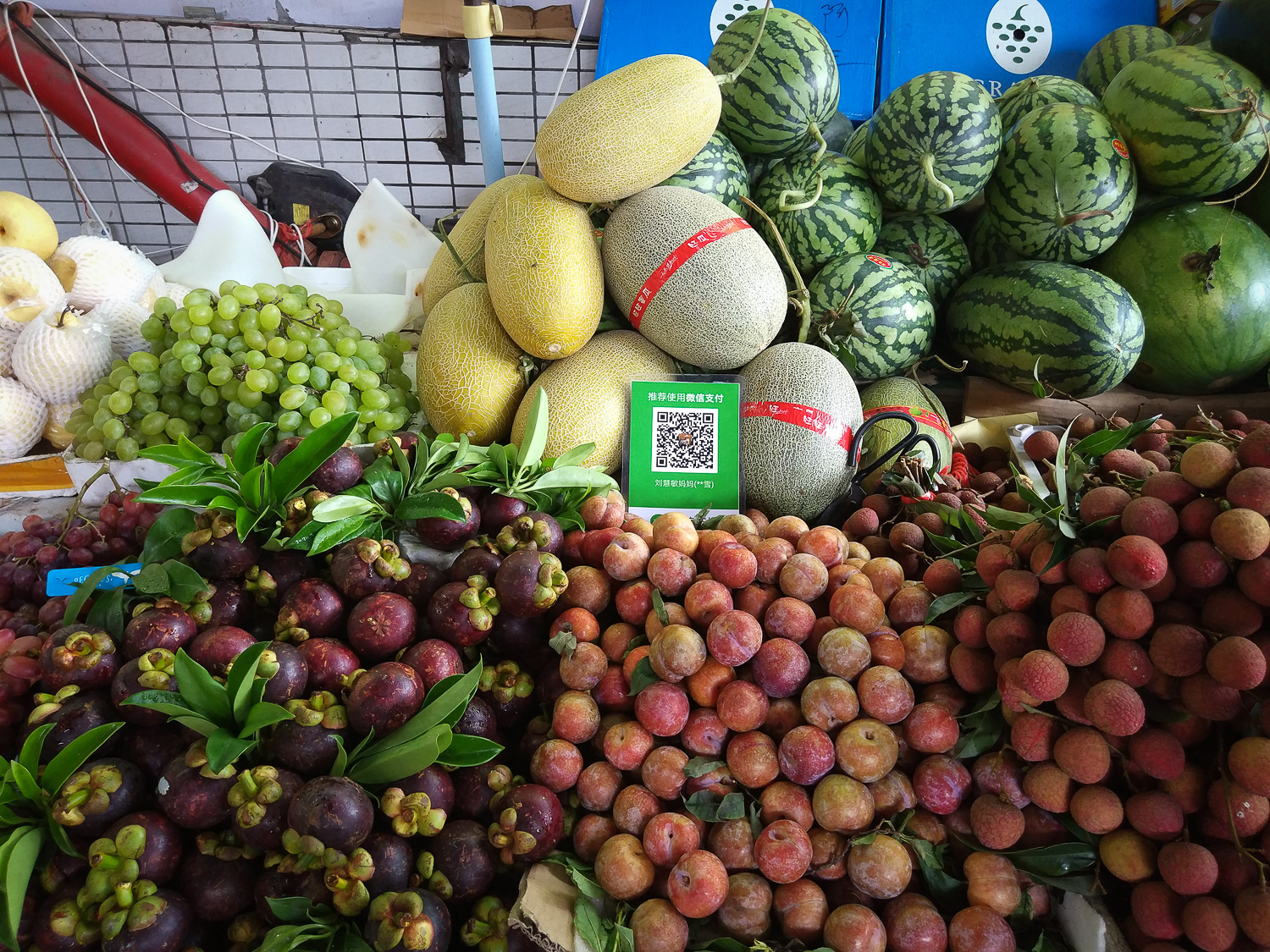
Fruit vendors in Liuzhou, Guangxi
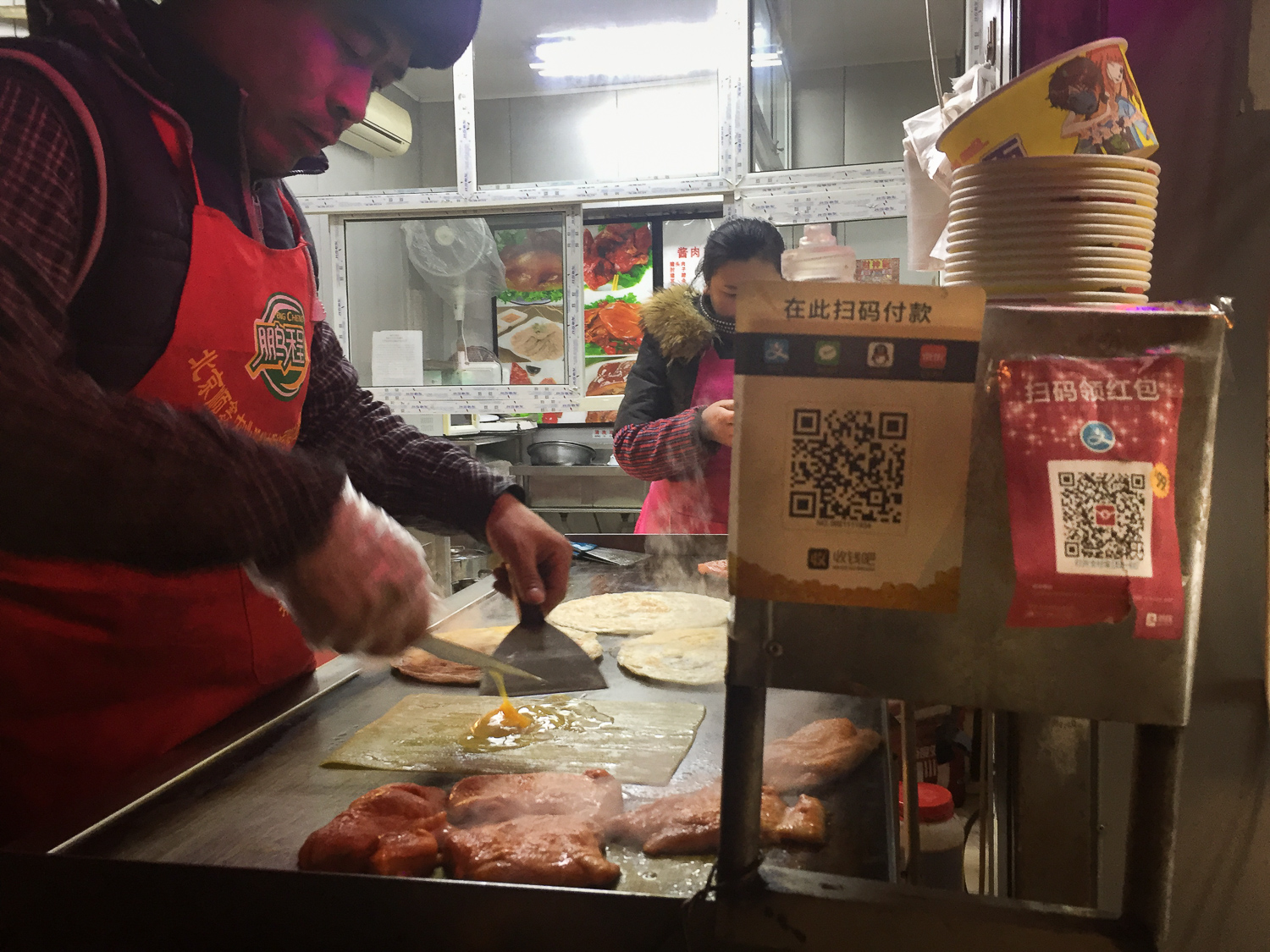
You can use WeChat Pay to buy kaolengmian (烤冷面 in Chinese) in Beijing—or you can go with Alipay to get a “hongbao” before paying

You can buy chestnuts with mobile payments, too
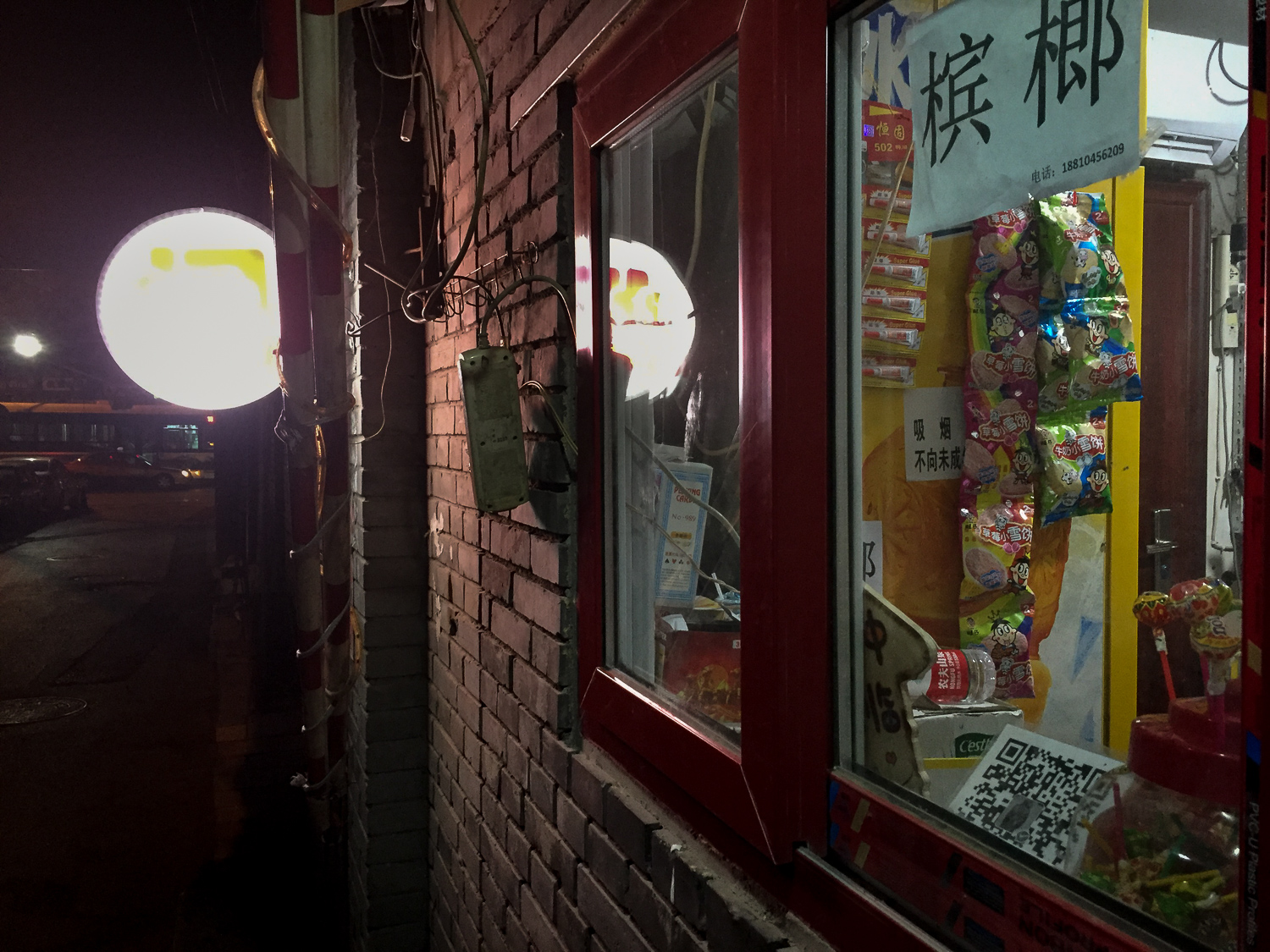
You can also scan the QR code to pay at this small grocery store in the wall in Beijing

A vendor selling socks on the sidewalk at Sanlitun, one of the busiest high-end shopping areas in Beijing

Now, if you ever get lost in Nanjing, just scan the QR code on a door plate and get more information about the address and a nearby police station
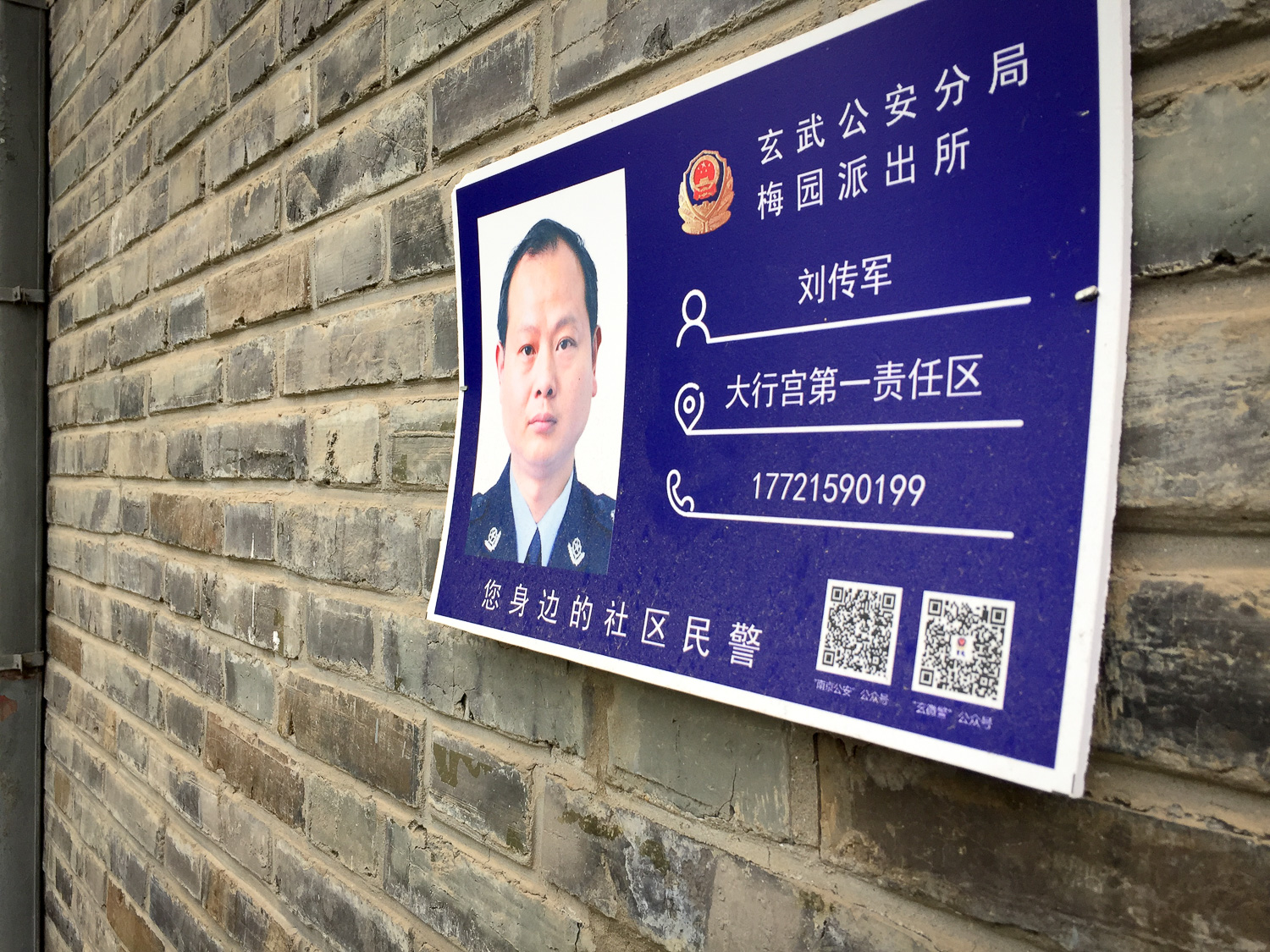
These QR codes will lead you to the WeChat official accounts of local police stations and Nanjing PD
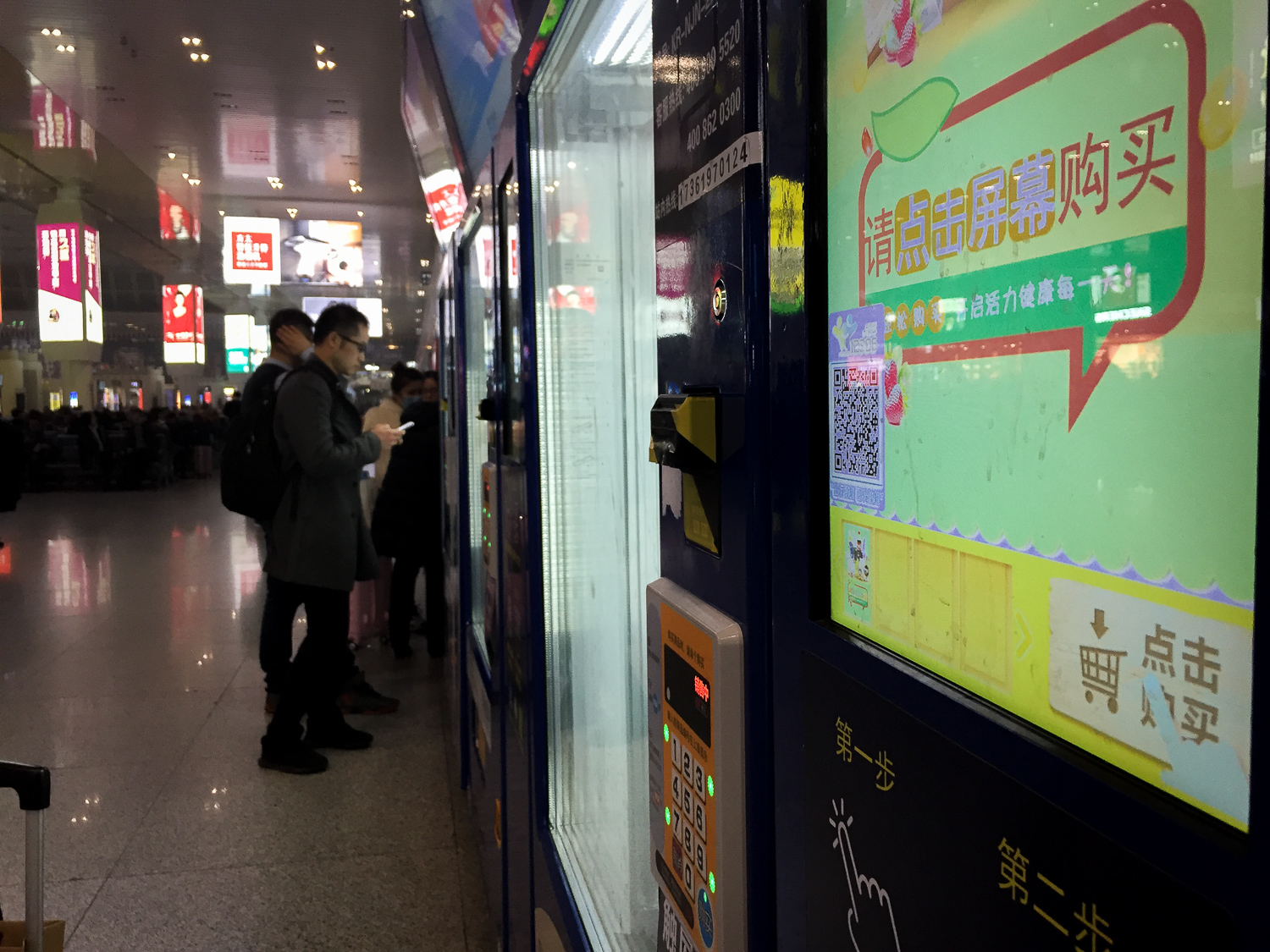
If you’re a frequent traveler, these vending machines with QR codes at train stations may come in handy

You can even order meals with a QR code scan on a high-speed train in China
Photos: Timmy Shen/TechNode














